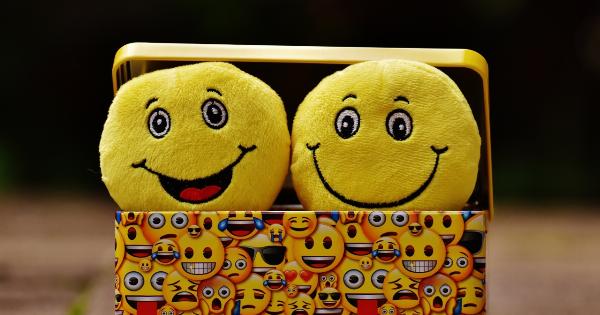Smiling is a natural response to happiness, and we are often encouraged to smile more because it could improve our mood and make us feel happier.
However, there’s something to be said about the science behind different types of smiles, including the fake smile. While a fake smile may not be genuine, it can still have an effect on our mood. In this article, we will explore the science behind the effect of a fake smile on our mood.
The Anatomy of a Smile
Before we dive into the science of a fake smile, it’s important to understand the anatomy of a smile. Smiling is a complex facial expression that involves the movement of several muscles.
The most notable muscles are the zygomaticus major, which is responsible for pulling the corners of the lips upwards and the orbicularis oculi, which causes the eyes to crinkle when we smile genuinely.
The Science behind the Power of Smiling
Smiling can be incredibly powerful. Studies have shown that when we smile, we activate certain regions in our brain that release feel-good chemicals like dopamine, serotonin, and endorphins.
These chemicals help to reduce stress and increase feelings of happiness and pleasure. Additionally, smiling can also improve our social connections with others, as it is a nonverbal communication that communicates warmth and friendliness.
The Different Types of Smiles
There are several different types of smiles, including genuine and fake smiles. Genuine smiles are also known as Duchenne smiles, named after the French neurologist Duchenne de Boulogne who studied the anatomy of smiling.
A genuine smile involves the movement of the zygomaticus major muscle, which pulls the corners of the lips upwards and the orbicularis oculi muscle causing the eyes to crinkle. In contrast, a fake smile, also known as a Pan Am smile, involves only the zygomaticus major muscle and does not involve crinkling of the eyes.
The Effect of a Fake Smile on Our Mood
Despite not being a genuine smile, research has shown that a fake smile can still have an effect on our mood.
In one study, participants were asked to hold chopsticks in their mouth, mimicking the muscle movements required for a smile, either a genuine Duchenne smile or a fake Pan Am smile, while completing a stressful task. Participants who held a Duchenne smile reported feeling less stressed than those who held a Pan Am smile or a neutral face.
Another study showed that participants who held a fake smile had a decrease in self-reported stress levels compared to those who held a neutral expression but also had a decrease in positive mood compared to those who held a genuine smile.
This suggests that while a fake smile can have some positive effects on our mood, it may not be as effective as a genuine smile in improving our overall mood.
The Social Benefits of a Genuine Smile
While a fake smile can have some effect on our mood, genuine smiles have a more significant impact on our social connections with others. When we genuinely smile, we communicate warmth and friendliness, which can improve our relationship with others.
A genuine smile can also make us more likable and approachable, which can improve our overall social functioning.
The Bottom Line
Smiling is a powerful tool that can have a positive impact on our mood and social connections with others. While a fake smile can have some effect on our mood, it may not be as effective as a genuine smile in improving our overall mood.
Additionally, a genuine smile can improve our social connections with others, making us more approachable and likable. So the next time you feel down, try cracking a genuine smile – it might just improve your mood and your social connections.






























